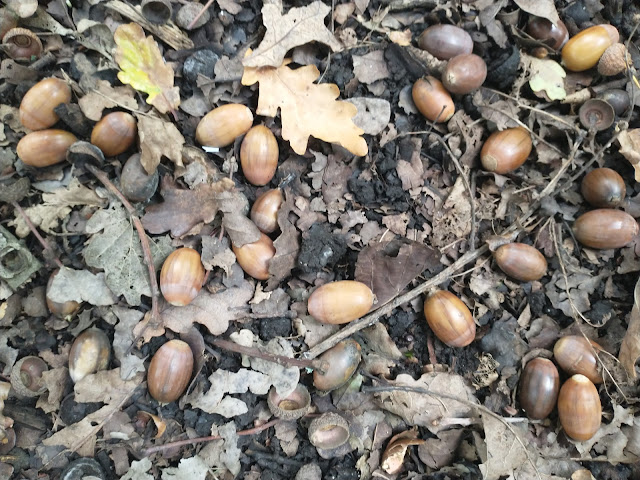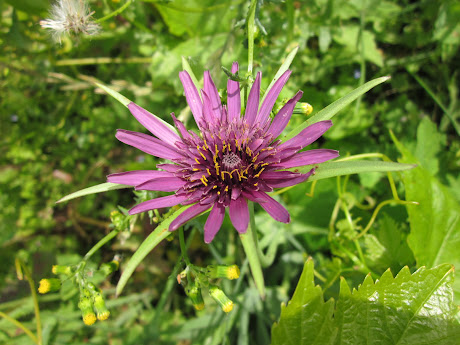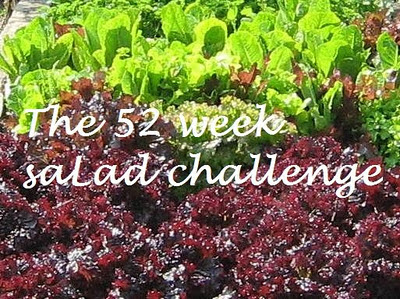A mast year
It's been almost impossible to go out for a walk lately and not get bonked on the head by a falling acorn or beech nut. The paths through the woods are strewn with the trees' bounty, far too much for the squirrels to hide away as is their usual wont. I'm sure they're as busy as they usually are; they just can't keep up with what's available.
I was reminded recently of the term mast year, which describes exactly what we're experiencing this autumn. My reasoning on why this is happening is:
- We had a mild, wet winter so the trees had a good drink and had plenty of opportunity to prime themselves ready for spring without snow, frost and ice getting in the way
- Blossom came early, and for once it wasn't blown away by a winter storm or loosened by a frost
- It was a warm spring so the bees and other pollinators maximised their activities in the sunshine
- They were so efficient that even the later spring and early summer drought wasn't sufficient to bring fruiting down to a more normal level
- Summer rain was just enough to bring all those fruits and nuts along to maturity
I was congratulating myself on working all that out for myself when I found this piece by the Woodland Trust on what a mast year is. It seems that trees are cleverer than I and practise something called predator satiation. It means the tree keeps its predators in check by producing much smaller crops most years so their numbers dwindle away, and then, when their numbers are low it produces a bumper crop, much more than predators like mice and squirrels can possibly eat. It means some of the nuts and acorns survive, and germinate to produce the next generation of trees. This happens every 5 to 10 years.
I've noticed all the berrying trees seem to have adopted the same strategy too. Usually the hawthorn over the fence has been stripped bare by the blackbirds by now, but not only are they still feeding, I'm sure I've heard many more birds in there than usual.
We may not have had much in the way of mists yet, but we're certainly having an autumn season of mellow fruitfulness this year. I'm loving my neighbourhood walks as a result.
Have you noticed the same in your area?













It does look like a mast year.
ReplyDeleteWe were on a walk a week ago, and it wasn't just the acorns dropping, I could swear that the squirrels were chucking them down at us!
It does feel like that gz!
DeleteGosh yes!
ReplyDeleteA direct hit from an acorn on the bonce really hurts as well and don't I know it. We've also had to replace a pane of glass in a cold frame. It's fascinating stuff though isn't it. I also read somewhere that a mast year often heralds a rough winter. Really hoping that is but an old wives' tale.. Enough already!
I'd put money on the old wives' tale, hence my thoughts about what happened in the spring.
DeleteI have noticed the same, even here in Toronto! Thanks for the low-down.
ReplyDeleteNow that's intriguing that you and Janet are saying it's the same on your side of the pond...
DeleteWe (hubby and I) were just talking about this - our side yard is almost impassible because of the slope and all the acorns. One could fall at every step.
ReplyDeleteThe critters must be having a field day!
DeleteInteresting post. I read a post elsewhere recently in which the writer said that they wished they had a hard hat to wear when walking in the forest. xx
ReplyDeleteWe need them in Chippenham!
DeleteHello again, Michelle! The bumper crop of acorns is is very interesting, I followed the link. Your mention of more berries made me think of an old wives tale saying that if the birds leave the berries, then we can expect a hard winter (guessing the plan for the birds is that they are saving them for later - that's just my thought with no evidence). That's probably not the case when there is a bumper crop.
ReplyDeleteHowever when trying to find a link to the berries tale, I stumbled across the Farmers' Almanac who say in their "20 Signs of a Hard Winter article, we explore the folklore behind some of the signs nature gives us about winter weather. One of them is acorns dropping in great numbers as a sign of a harsh winter ahead. But this usually refers to the brown acorns falling in the fall months." Now, I didn't expect that. I hope this isn't the case, especially this year more than any other. Then again, that would force everyone to stay at home. Time will tell to both. Hoping this comment finds you both well, sending thoughts and best wishes.
Sending good thoughts your way too, Shirley. Here's hoping for a brighter 2021 xxx
Delete